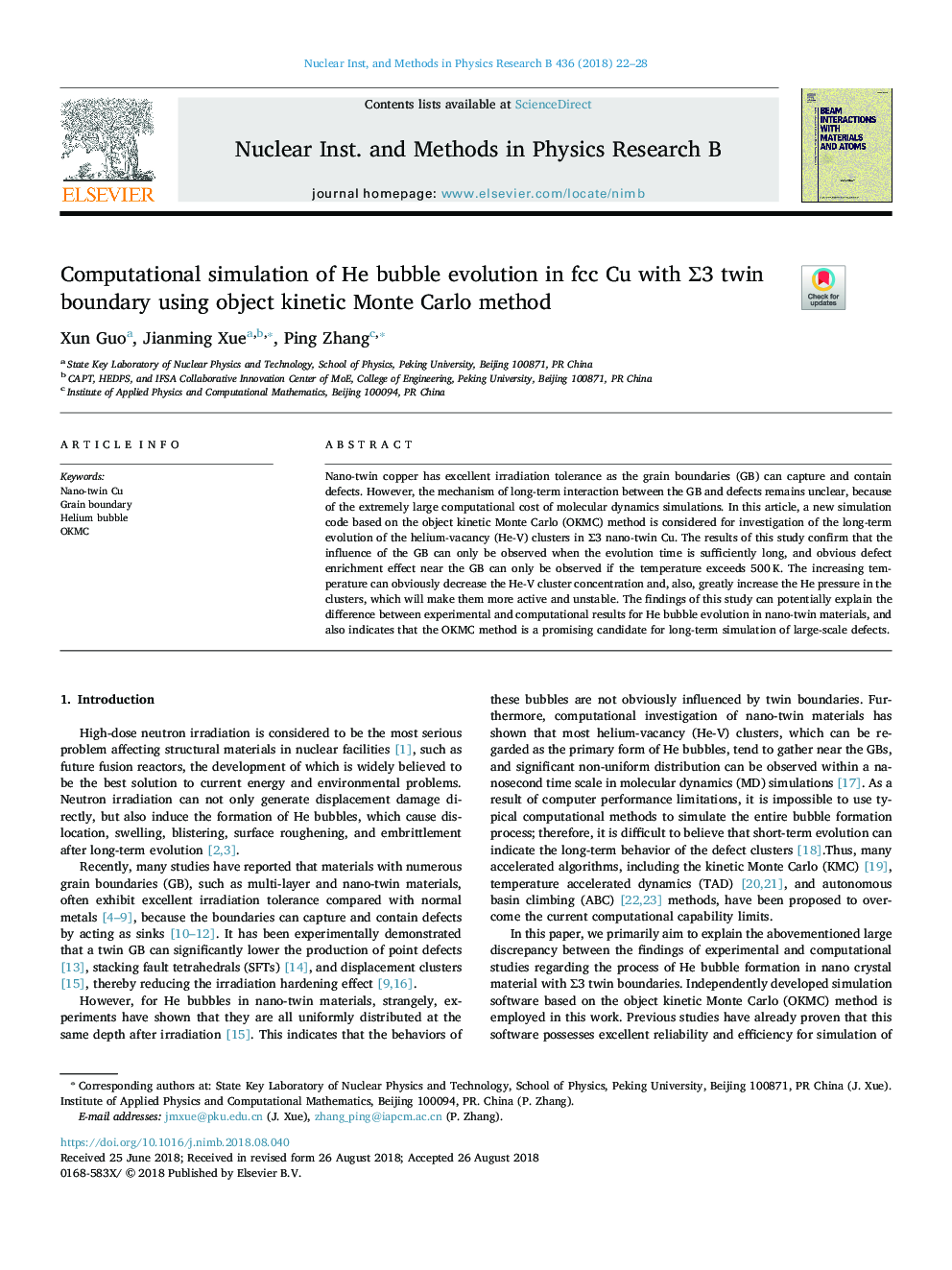| کد مقاله | کد نشریه | سال انتشار | مقاله انگلیسی | نسخه تمام متن |
|---|---|---|---|---|
| 8961471 | 1646497 | 2018 | 7 صفحه PDF | دانلود رایگان |
عنوان انگلیسی مقاله ISI
Computational simulation of He bubble evolution in fcc Cu with Σ3 twin boundary using object kinetic Monte Carlo method
دانلود مقاله + سفارش ترجمه
دانلود مقاله ISI انگلیسی
رایگان برای ایرانیان
موضوعات مرتبط
مهندسی و علوم پایه
مهندسی مواد
سطوح، پوششها و فیلمها
پیش نمایش صفحه اول مقاله

چکیده انگلیسی
Nano-twin copper has excellent irradiation tolerance as the grain boundaries (GB) can capture and contain defects. However, the mechanism of long-term interaction between the GB and defects remains unclear, because of the extremely large computational cost of molecular dynamics simulations. In this article, a new simulation code based on the object kinetic Monte Carlo (OKMC) method is considered for investigation of the long-term evolution of the helium-vacancy (He-V) clusters in Σ3 nano-twin Cu. The results of this study confirm that the influence of the GB can only be observed when the evolution time is sufficiently long, and obvious defect enrichment effect near the GB can only be observed if the temperature exceeds 500â¯K. The increasing temperature can obviously decrease the He-V cluster concentration and, also, greatly increase the He pressure in the clusters, which will make them more active and unstable. The findings of this study can potentially explain the difference between experimental and computational results for He bubble evolution in nano-twin materials, and also indicates that the OKMC method is a promising candidate for long-term simulation of large-scale defects.
ناشر
Database: Elsevier - ScienceDirect (ساینس دایرکت)
Journal: Nuclear Instruments and Methods in Physics Research Section B: Beam Interactions with Materials and Atoms - Volume 436, 1 December 2018, Pages 22-28
Journal: Nuclear Instruments and Methods in Physics Research Section B: Beam Interactions with Materials and Atoms - Volume 436, 1 December 2018, Pages 22-28
نویسندگان
Xun Guo, Jianming Xue, Ping Zhang,